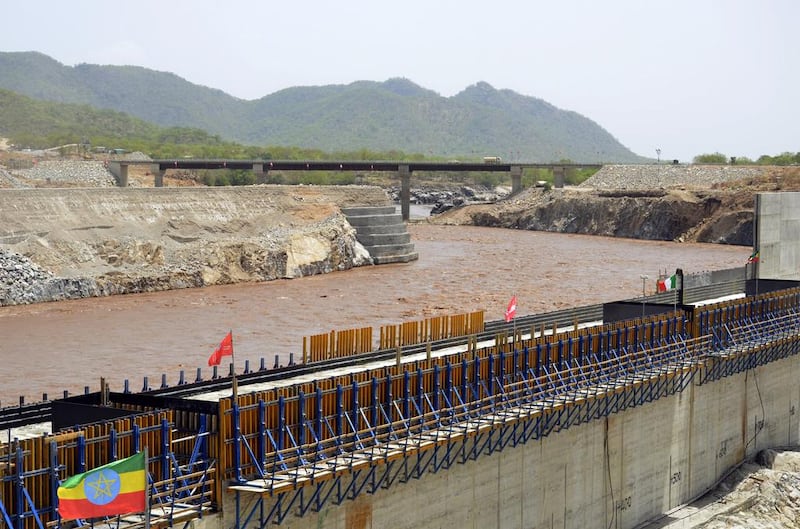Cruise boats normally travel smoothly up the Nile from Luxor to Aswan, as their pharaonic forebears did 4000 years ago. But last week, low water levels left them stranded like hippos on sand-banks. Now, Egypt, a civilisation built on the fertile river-banks, fears that a new dam in Ethiopia will dramatically reduce its water and leave it at the mercy of geopolitical foes.
The Aswan High Dam, completed in 1970, was a landmark in Egyptian nationalism. It was also a political cause celebre – when the US withdrew its offer to fund the dam, president Gamal Abdul Nasser turned to then USSR for help, and nationalised the Suez Canal to raise finance, triggering the 1956 Suez Crisis.
The Grand Ethiopian Renaissance Dam, which is still under construction, may not have such dramatic consequences, but it has triggered intense controversy throughout the Nile basin. When completed, it will be the biggest hydroelectric plant in Africa with 6,450 megawatts of generating capacity. Despite a booming economy and a population of 102 million, the second-largest in the continent, Ethiopia has just 4,290MW installed today. Egypt’s slightly smaller population has 38,000MW.
Under the 1959 Nile Waters Agreement, Egypt and Sudan agreed their shares of the Nile's flow at 55.5 billion cubic metres and 18.5bn m3, respectively. This treaty was reached without reference to the other riparian states, a situation resented by Ethiopia, which supplies 80 per cent of the river's flow.
The dam does not affect the smaller White Nile, which flows directly from South Sudan into Sudan and joins the Blue Nile at Khartoum.
________
Read More:
[ The state of the climate in 2018 ]
[ Nuclear powered future is a key to environmental safety ]
________
Egypt's concern stems from its entire dependence on the Nile's water. Filling the dam will take 90bn m3, allowing for evaporation and leakage and if Ethiopia fills it over six years, it would reduce the flow by about 20 per cent.
Egypt is building desalination plants and waste-water treatment plants to supply potable water, but these are relatively costly and energy-intensive. Most of the Nile water is used for irrigation, for which Egypt does not have many large-scale and cheap alternatives. By 2050, Egypt will need another 21bn m3, virtually the entire river's flow.
Before filling the dam, technical studies on the impact on downstream countries should be completed. Egypt feels that Ethiopia is spinning out such studies while it completes the dam, and talks broke down in November 2017. Former president Mohammed Morsi before his removal from power was foolishly caught on camera discussing with his cabinet attacking Ethiopia to stop the dam.
Sudan, formerly an Egyptian ally, has aligned with Addis Ababa for the benefit of its own agriculture.
Egypt has now suggested to Ethiopia that the World Bank could mediate, as it did between India and Pakistan last year for a renegotiation of the 1960 Indus Water Treaty. This agreement between the two subcontinental states has endured remarkably well despite their frequent hostility in other fields.
The best way to resolve the Nile issues is via co-operative development through the whole basin, the vision of the Nile Basin Agreement between Egypt, Sudan, Ethiopia and six other riverine states.
Ethiopia wants to export surplus electricity to Sudan, Kenya, Djibouti and possibly even Egypt. Saudi Arabia, currently building an electricity interconnection with Egypt, has talked of exporting power also to Ethiopia. Hydroelectric dams along the river’s length can be used to share power, which varies seasonally, and to support the region’s abundant other renewable energy resources – solar throughout, wind in Egypt and geothermal in Ethiopia and Kenya.
The dam should help with flood control and irrigation in Sudan. Ethiopia argues that because of lower evaporation in the Grand Renaissance Dam as compared to the Aswan High Dam, it could even cut water losses overall. The suspicion between Egypt and the Sudan-Ethiopia axis is not helping: working with Sudan on reducing evaporation in the Sud marshes could save 20 bn m3 annually, more than is being used to fill the dam. And Egypt needs to agree to a filling schedule with Ethiopia soon so that it can plan ahead for the Aswan High Dam to maintain electricity output.
No matter how much Nile water it gets, Egypt's fast-rising population and growing food imports mean it badly needs to tackle wasteful and polluting water-use, and learn from other water-frugal areas. Fixing its neglected agricultural sector can improve food security and improve the lives of the rural population.
The Nile is just one area picked out by gloomy forecasters as a site for future “water wars”. The Indus, the Greater Mekong area in south-east Asia, and the Jordan river and Dead Sea between Israel and Jordan, are also affected by climate change, fast-growing populations and industry, and political tensions.
But open conflict will certainly make water problems insoluble. Cairo and its neighbours have the opportunity to set an example of co-operation, and carry this ancient river's history into the 21st century.
Robin M. Mills is CEO of Qamar Energy, and author of The Myth of the Oil Crisis






